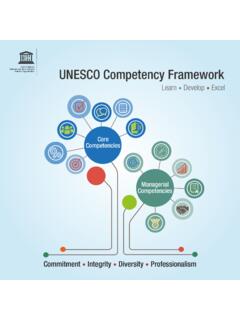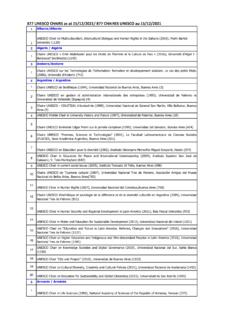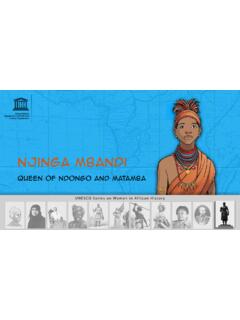Transcription of Creative Industries? - UNESCO
1 Section for the Diversity of Cultural Expressions What do we mean by Cultural and Creative Industries? Capacity-Building Programme in Africa Document No. 11 DRAFT What do we Mean by the Cultural and Creative Industries? The concept of cultural industries - the creation, industrial reproduction and mass distribution of cultural works - is not new. In 1948, Theodore Adorno and Max Horkheimer coined the term. Half a century has passed since they developed the concept and during this time the ways of creating, producing and distributing cultural products has changed dramatically. Cultural industries have incorporated, in addition to adapting to technological advances and the evolving place of media in society, sophisticated production processes and large-scale distribution methods to reach global markets.
2 In the 1990s, in Australia and the United Kingdom, the concept further evolved towards the Creative economy. The Creative economy places an emphasis on creativity and presenting it as the engine of innovation, technological change and as a comparative advantage in business development. This led to the introduction and use of the terms Creative industries in policy development circles. These industries were defined in the United Kingdom as those industries which have their origin in individual creativity, skill and talent which have a potential for job and wealth creation through the generation and exploitation of intellectual property" (' Creative Industries Mapping Document', DCMS, 2001).
3 In recent years concepts such as content industries and copyright industries have also been introduced including slightly different definitions and disciplines. All of these concepts and approaches share the common theme of creativity. Human creativity is the source of cultural and Creative industries goods and services. They also share the common links of culture, trade and intellectual property rights, particularly copyright. The differences in the definitions adopted on a national level depend largely on the needs and scope defined within local policy evaluations and development initiatives. The definitions adopted on a national level depend largely on the needs and scope defined within local policy evaluations and development initiatives.
4 Section for the Diversity of Cultural Expressions 2 What do we mean by Cultural and Creative Industries? Capacity-Building Programme in Africa Document No. 11 DRAFT UNESCO encourages the use of UNESCO s Framework for Cultural Statistics developed by the Institute for Statistics as a starting point (see above illustration). The proposed definition is broad. The cultural and Creative industries are: Those sectors of organized activity that have as their main objective the production or reproduction, the promotion, distribution or commercialization of goods, services and activities of content derived from cultural, artistic or heritage origins.
5 This approach places the emphasis on goods, services and activities of a cultural/ artistic and or heritage nature, whose origin lies in human creativity, whether past or present. It also underscores the necessary functions of each aspect of the cultural value chain that allows goods, services and activities to reach a public and market. Therefore this definition is not limited to only the output of human creativity and industrial reproduction but includes other activities that contribute to the creation and distribution of cultural and Creative products. Framework for cultural statistics domains

















